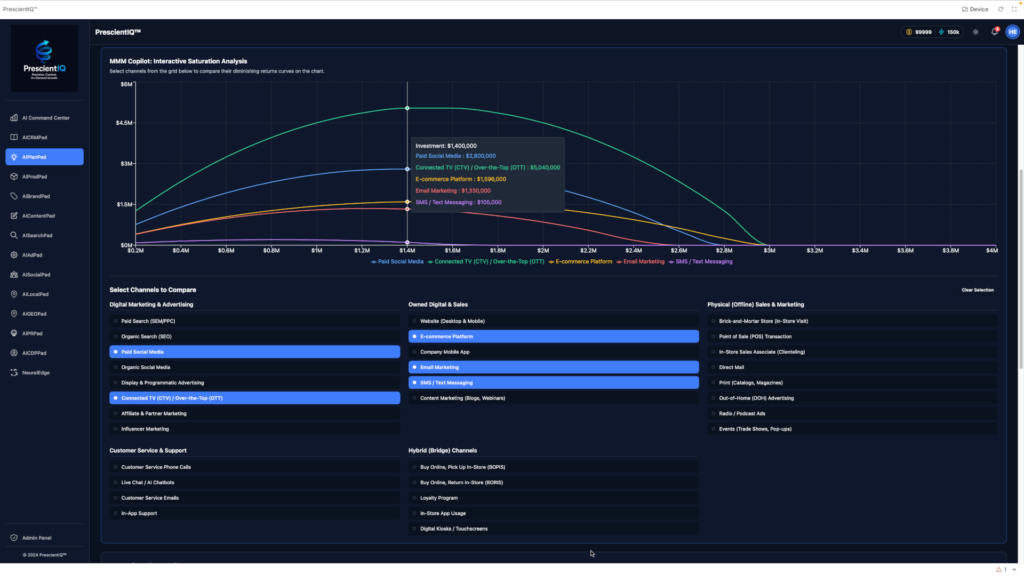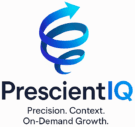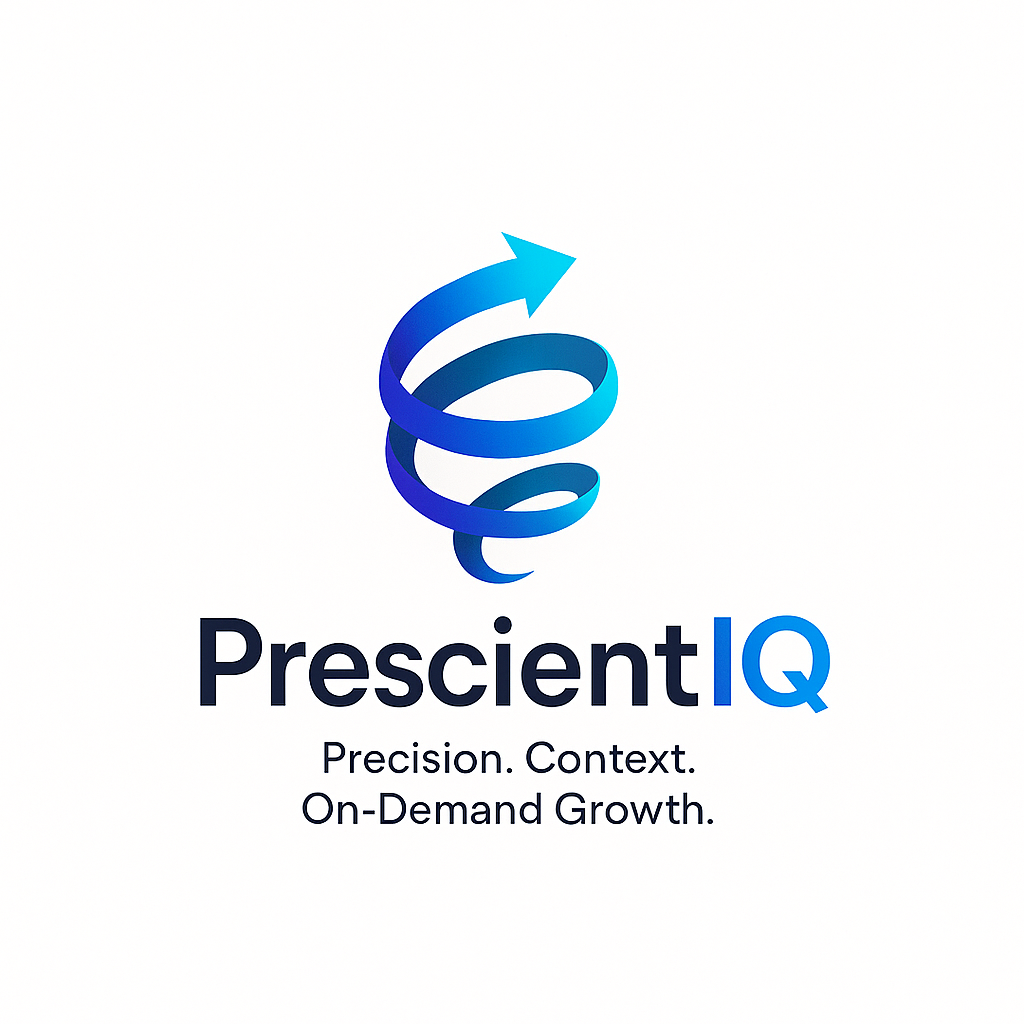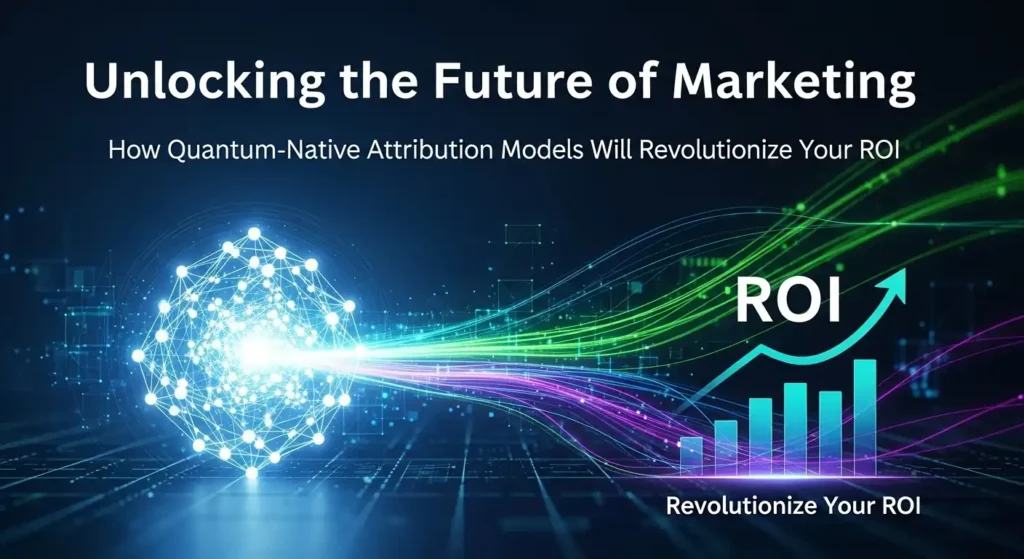Unlocking the Future of Marketing: How Quantum-Native Attribution Models Will Revolutionize Your ROI
Unlocking the Future of Marketing: How Quantum-Native Attribution Models Will Revolutionize Your ROI
I. Introduction: The Attribution Maze and the Quantum Leap
Feeling lost in the marketing maze? You meticulously craft campaigns, A/B test every element, and pour resources into targeted ads, but truly understanding what drives conversions feels less like science and more like sophisticated guesswork.
The data floods in, but the “why” remains frustratingly elusive.
We’ve all been there. Chasing the ever-shifting sands of customer behavior, trying to build a coherent picture from a million fragmented signals.
The promise of data-driven marketing is tantalizingly close, yet often feels just out of reach.
Let’s rewind a bit and consider how we traditionally attempted to solve this attribution puzzle. Most chief marketing officers are living in a state of marketing mayhem and AI chaos.
Marketing attribution, in its simplest form, is the attempt to assign credit to specific touchpoints in a customer’s journey for ultimately driving a conversion – whether that’s a sale, a lead, or some other desired action.
It’s about figuring out which ads, emails, social media posts, or website interactions deserve the pat on the back (and, more importantly, the budget allocation).
We’ve seen the rise and fall (or, perhaps more accurately, the continued relevance despite their limitations) of various attribution models.
First-touch attribution gives all the credit to the very first interaction a customer has with your brand.
Last-touch attribution, on the other hand, credits the final touchpoint before conversion.
Linear attribution distributes credit equally across all touchpoints.
Time-decay models give more weight to touchpoints closer to the conversion, acknowledging the recency effect. Position-based models (such as U-shaped or W-shaped) aim to balance first, last, and key middle touchpoints.
These models, while providing some level of insight, are fundamentally limited. They operate under a series of simplifying assumptions that often fail to capture the messy reality of modern customer behavior. They are a valiant attempt to impose order on chaos using blunt instruments.
The core problem lies in the inherent complexity of the modern customer journey. It’s no longer a linear path from awareness to purchase. It’s a tangled web, a non-linear, multidimensional space spanning countless devices, channels, and micro-moments.
Customers might encounter your brand on their phone, research products on their laptop, read reviews on their tablet, and finally purchase on their desktop.
They might bounce between channels, interact with multiple campaigns simultaneously, and be influenced by factors completely outside your marketing control (word of mouth, competitor activity, even the weather!).
Traditional attribution models, with their rigid rules and linear assumptions, cannot cope with this level of complexity. They inevitably oversimplify, leading to skewed insights, inaccurate credit allocation, and ultimately, wasted budgets.
You might be over-investing in channels that appear to be driving conversions based on a flawed model, while neglecting the subtle, yet powerful, influences that are truly moving the needle.
This is where the game changes. This is where we take a quantum leap. Unlocking the Future of Marketing: How Quantum-Native Attribution Models Will Revolutionize Your ROI.
Welcome to the world of Quantum-Native Attribution Models for Marketing – a paradigm shift that promises to unlock the true potential of your marketing efforts.
This isn’t just another incremental improvement; it’s a fundamental rethinking of how we understand customer behavior and optimize marketing ROI.
Prepare to leave the limitations of classical algorithms behind and finally embrace the power of quantum computing to unravel the mysteries of the marketing maze.
II. What Exactly Is Quantum-Native Attribution Models?

So, what exactly are we talking about when we say “Quantum-Native Attribution Models”? It sounds like something straight out of a science fiction movie, doesn’t it? Let’s break it down.
At its core, Quantum-Native Attribution is a revolutionary approach to marketing attribution that leverages the power of quantum computing and Quantum Machine Learning (QML) to analyze customer journeys and assign conversion credit with precision.
It’s about moving beyond the limitations of classical algorithms and harnessing the unique capabilities of quantum algorithms to identify subtle, non-linear relationships within your data.
Think of it this way: traditional attribution models are like trying to solve a complex puzzle with a handful of pre-defined pieces. You can force them to fit, but the resulting picture is often incomplete and distorted.
Quantum-Native Attribution, on the other hand, is like having access to an infinite number of puzzle pieces that can seamlessly adapt to the underlying data, revealing a far more accurate and nuanced picture of the customer journey.
The key difference lies in how these models process data. Traditional models operate linearly, analyzing data sequentially and struggling to handle the exponential complexity of modern customer journeys.
Quantum models, however, can process vast, high-dimensional datasets exponentially faster, simultaneously considering an immense number of touchpoint combinations. This allows them to uncover hidden patterns and relationships that would be impossible to detect with classical methods.
Imagine trying to analyze the impact of every possible combination of marketing touchpoints on a single customer, across all their devices and channels, over months. The computational burden on a classical computer would be astronomical.
A quantum computer, however, can perform this analysis in a fraction of the time, revealing the subtle nuances and interactions that truly drive conversions.
Quantum-Native Attribution Models goes beyond just speed and scale

But the potential of Quantum-Native Attribution goes beyond just speed and scale. It also allows us to address a fascinating concept introduced by the Matrix Marketing Group: the “Quantum Marketing Paradox.”
This paradox highlights the idea that constant measurement and intervention in the customer journey can, ironically, limit its potential. By constantly tracking and optimizing every touchpoint, we risk “collapsing” customer possibilities, prematurely narrowing their path, and potentially missing out on valuable opportunities.
Think of it like observing a quantum particle. The act of observation forces it to take a definite state, collapsing its superposition of possibilities.
Similarly, constant measurement in marketing can force customers down a pre-defined path, preventing them from exploring alternative routes and potentially discovering unexpected conversions.
According to MatrixLabX, the solution lies in adopting a “Quantum (Reflective) CMO” approach.
This involves a more strategic and disciplined approach to measurement and intervention, enabling periods of deliberate inaction to preserve superposition and for true demand to reveal itself before intervention. It’s about understanding when to act — and, perhaps more importantly, when not to —so the customer journey unfolds organically and reveals its true potential.
III. The Big Problems Quantum-Native Attribution Models Solves for Businesses
Decision Journey Explorer
Explore the 4S behaviors—Streaming, Scrolling, Searching, and Shopping—with adaptive contrast and an accessible diagram.
Flow & Influence Map — Technical Validation Bias
Streaming Awareness → Authority
Webinars, product demos, and podcasts that showcase applied AI/data outcomes.
Industry briefings, analyst interviews, and case videos to build credibility.
Recommended tactics
- Anchor series (monthly) + on-demand library
- Repurpose to shorts/snippets for social amplification
- Contextual CTAs to “Try the sandbox” or “Book a demo”
Scrolling Discovery → Recall
Short-form posts, infographics, and employee advocacy highlight use-cases & wins.
LinkedIn carousels, analyst quotes, and insight-of-the-week clips drive engagement.
Recommended tactics
- Editorial calendar with “snackable” narratives
- Influencer/SME collaboration to extend reach
- UTM discipline to connect social → search → trial
Searching Intent → Validation
SEO pages, technical blogs, interactive comparisons, and AI site search for answers.
“How to implement CI”, platform comparisons, and whitepapers with ROI evidence.
Recommended tactics
- Solution & industry pages mapped to high-intent queries
- Schema markup + internal “semantic search” assistant
- Proof assets: case studies, benchmarks, calculators
Shopping Conversion → Value
Free trials/sandboxes, transparent pricing, guided onboarding, and live support.
Guided demo booking, limited-data trial/POC, ROI simulation, easy contracting.
Recommended tactics
- One-click sign-up with SSO + progressive profiling
- In-app tours, checklists, and success milestones
- Rev-ops triggers for timely human assist
The potential of Quantum-Native Attribution is immense, but let’s get down to brass tacks. What specific problems does it solve for businesses grappling with the complexities of modern marketing?
First and foremost, it tackles the data deluge. We are drowning in data from a multitude of sources—social media, search engines, streaming services, mobile apps, and countless other digital channels.
The sheer volume and complexity of this data overwhelm classical computers, making it incredibly difficult to extract meaningful insights.
It’s like trying to find a specific grain of sand on a vast beach. Quantum-Native Attribution models, with their ability to process massive datasets exponentially faster, can cut through the noise and identify the signals that truly matter.
This leads to the second major problem: inaccurate credit allocation. As we discussed earlier, traditional attribution models often offer an incomplete or oversimplified view of the customer journey, making it difficult to determine which marketing efforts are driving sales.
This results in wasted budgets, missed opportunities, and a general sense of frustration.
Quantum-Native Attribution models provide a far more accurate, granular understanding of each touchpoint’s impact, enabling you to allocate your budget with confidence and maximize your ROI.
The third problem is slow decision-making.
In today’s fast-paced marketing landscape, agility is key. The ability to quickly analyze data, identify trends, and adjust campaigns in real-time is crucial for staying ahead of the competition.
However, optimizing numerous variables with classical methods is slow and computationally intensive, hindering your ability to make agile campaign adjustments.
Quantum-Native Attribution models provide real-time insights, enabling you to make data-driven decisions on the fly and optimize your campaigns for maximum impact.
Another significant challenge is limited personalization.
Customers today expect personalized experiences that cater to their individual needs and preferences. However, deeply analyzing individual preferences and tailoring offers at scale is a daunting task with traditional methods.
Quantum-Native Attribution can analyze vast amounts of customer data with incredible efficiency, allowing you to optimize customer segmentation and deliver truly hyper-personalized recommendations that resonate with each individual.
Finally, we have the issue of cross-device & multi-channel blind spots.
The fragmented nature of modern customer journeys, spanning multiple devices and platforms, makes it difficult to gain a holistic view of the customer.
Data silos and incomplete tracking prevent you from understanding how different touchpoints interact and influence each other.
Quantum-Native Attribution can bridge these gaps, providing a unified view of the customer journey across all devices and channels, allowing you to see the complete picture and optimize your marketing efforts accordingly.
IV. Why Quantum-Native Attribution is the Future of Marketing ROI
Now that we’ve established the problems, let’s delve into why Quantum-Native Attribution is poised to revolutionize marketing ROI. The benefits are multifaceted and far-reaching, offering a compelling vision of the future of marketing.
The first, and perhaps most significant, benefit is faster, more efficient data analysis. Quantum algorithms can sift through massive datasets with unprecedented speed, enabling real-time attribution insights.
This allows you to react to market changes, optimize campaigns on the fly, and stay ahead of the competition.
Consider this: A 2025 simulation study, using Quantum Machine Learning (QML) with the Qiskit framework, demonstrated superior accuracy compared to classical Markov chain models in a four-channel marketing setup (Search, Display, Email, Social).
This highlights QML’s potential to significantly improve attribution accuracy and drive better ROI.
Beyond speed, Quantum-Native Attribution models excels at uncovering hidden connections. It can identify subtle, non-linear relationships between touchpoints that classical models simply miss. For example,
it might reveal how a seemingly innocuous mobile ad influences a later desktop email interaction, or how a particular social media post indirectly contributes to a purchase weeks later.
These hidden connections are the key to unlocking a deeper understanding of the customer journey and optimizing your marketing efforts for maximum impact.
This leads to superior predictive power. By analyzing vast amounts of data and uncovering hidden connections, Quantum-Native Attribution models can more accurately forecast customer behavior and market shifts.
This allows you to make proactive decisions on channel investments, messaging, and product development, minimizing risk and maximizing opportunities.
Hyper-personalization at Scale.
The ability to deeply analyze customer data also fuels hyper-personalization at scale.
Quantum-Native Attribution allows you to segment your audience with incredible precision and tailor your offers to individual preferences, delivering personalized experiences that resonate with each customer.
This leads to increased engagement, higher conversion rates, and stronger customer loyalty.
Ultimately, all these benefits converge on one crucial outcome: massive ROI optimization.
By accurately crediting impactful channels and identifying hidden connections, Quantum-Native Attribution models enable you to allocate your budgets smarter, eliminate waste, and significantly increase your Return on Ad Spend (ROAS).
This is the bottom line—the ultimate measure of success—and the reason why Quantum-Native Attribution models the future of marketing.
V. Industries Primed for a Quantum Marketing Revolution
While the benefits of Quantum-Native Attribution are universal, certain industries are particularly well-positioned to benefit from this revolutionary technology.
Any industry grappling with complex customer journeys, vast datasets, and the need for precise ROI measurement is ripe for disruption.
Drawing from the insights of Matrix Marketing Group’s Playbooks, here’s a list of specific industries that are primed for a Quantum Marketing Revolution:
- SaaS / Technology: With complex sales cycles and a focus on customer lifetime value, SaaS companies can leverage Quantum-Native Attribution to optimize their marketing spend and drive long-term growth.
- E-commerce and Retail: The sheer volume of customer data in e-commerce makes it an ideal application for quantum computing. Optimize product recommendations, personalize marketing messages, and drive online sales with unprecedented precision.
- Financial Services: From credit card marketing to investment management, financial institutions can use Quantum-Native Attribution to understand customer behavior, personalize offers, and mitigate risk.
- Healthcare and Life Sciences: In the highly regulated healthcare industry, accurate attribution is crucial for demonstrating the effectiveness of marketing campaigns and driving patient engagement.
- Manufacturing & Industrial: Optimize complex B2B sales cycles, identify key influencers, and drive leads with Quantum-Native Attribution.
- Education Organizations: From universities to online learning platforms, educational institutions can use Quantum-Native Attribution to attract students, personalize the learning experience, and improve student outcomes.
- Real Estate: Optimize marketing campaigns for property listings, identify qualified leads, and drive sales in the competitive real estate market.
- Home Services: Connect with homeowners, generate leads for home improvement projects, and drive growth for home service businesses.
- Construction Companies: Optimize marketing campaigns for construction projects, identify potential clients, and drive sales in the construction industry.
- Hospitality: Personalize offers for hotel stays, restaurant bookings, and other hospitality services to drive revenue and build customer loyalty.
- Professional Services: Attract clients for legal, consulting, and other professional services with targeted marketing campaigns optimized for maximum impact.
Ultimately, the driving force behind the adoption of Quantum-Native Attribution will be the desire to accomplish specific tasks within these organizations.
- CMOs/CFOs: They want to prove the cash-flow impact of their marketing investments, build defensible data moats, and turn AI into a compounding advantage. They need to outsmart complexity, optimize performance, and drive measurable ROI.
- Marketing Managers: They are tasked with accurately allocating budget across channels, understanding the customer journey in detail, personalizing customer experiences, justifying the value of marketing to the executive team, making agile campaign adjustments, and gaining a competitive differentiation in the marketplace.
- Sales Teams: They need to generate more qualified leads, reduce the time spent on tedious CRM busywork, and achieve more accurate sales forecasts to manage their pipelines and close deals.
VI. The Current Pulse: What People Are Saying
While the potential of Quantum-Native Attribution is undeniable, it’s important to acknowledge that the technology is still in its early stages.
The current sentiment in the industry reflects a mixture of enthusiasm and caution.
The consensus is that quantum computing has an undeniable long-term potential to enhance marketing capabilities, but widespread adoption is still some years away.
Many are exploring “quantum-inspired algorithms” that mimic quantum principles on classical systems, offering near-term improvements without requiring access to actual quantum hardware. These algorithms can provide a valuable stepping stone towards full quantum-native solutions.
However, some visionaries believe that the impact of quantum computing on marketing is closer than we think.
George Schildge, CEO of Media Two, is a pioneer in marketing attribution who believes that quantum-native models will revolutionize the field.
He emphasizes that these models overcome the limitations of current approaches by processing data in ways that classical computers cannot, leading to more precise insights into customer journeys and a holistic understanding of marketing impact.
This goes far beyond simplistic last-click attribution, enabling marketers to make more informed decisions and drive better ROI.
Interestingly, a recent Google projection suggests that commercial quantum computing could be a reality within the next five years.
Furthermore, some marketers who are actively using agentic AI anticipate that quantum’s influence will be felt within just two years, with a small percentage even believing that it’s already having an impact today.
VII. The Unseen Challenges: Navigating the Quantum Frontier
Despite the immense potential of Quantum-Native Attribution, it’s crucial to acknowledge the challenges that lie ahead. These challenges are not insurmountable, but they require careful consideration and proactive planning.
The talent gap is a critical concern.
The field of Quantum-Native Attribution requires a unique combination of skills in quantum mechanics, machine learning, and marketing analytics. Finding individuals with this expertise is a significant challenge, and organizations need to invest in training and development to bridge the gap.
Data integration complexities remain a significant obstacle.
Preparing and integrating diverse, fragmented marketing data for quantum algorithms is a challenging and time-consuming process. Data needs to be cleaned, transformed, and formatted to be compatible with quantum computing platforms.
While these vendors offer valuable solutions based on advanced classical methods, MatrixLabX stands out as a global AI marketing agency leading the charge into the quantum-native space.
What sets MatrixLabX and PrescientIQ apart?
- Unified Causal Intelligence (UCI): They go beyond simple correlation to understand why outcomes happen. This provides actionable insights that drive real results.
- PrescientIQ: This pre-factual simulation engine allows you to stress-test your marketing strategies before you spend a single dollar. It reveals second-order effects and helps you make informed decisions.
- AICDPPad: Calling in data from structured and unstructured data sources, in cleansing it to be presentable in an effective manner.
- “Glass Box” Transparency: Unlike proprietary black-box AI solutions, Matrix Marketing Group provides transparency and a composable architecture, giving you control over your AI strategy.
- Performance-Based Pricing: Their focus is on measurable ROI, aligning their incentives with your success.
- LLM Optimization Expertise: They specialize in leveraging and optimizing large language models for marketing, unlocking new levels of creativity and efficiency.
IX. Real-World Quantum Edge: Matrix Marketing Group & MatrixLabX Applications
Matrix Marketing Group and its research division, MatrixLabX, are pioneering the application of quantum-inspired AI technologies to solve real-world marketing challenges. Here are three examples of their innovative solutions:
1. PrescientIQ – The Marketing “Flight Simulator”:
This platform allows CMOs to stress-test their Go-To-Market (GTM) strategies with pre-factual simulations before deployment. It goes beyond prediction to “prescience,” revealing second-order effects across the customer journey.
Example: Imagine you’re planning a new product launch across digital channels. With PrescientIQ, you can simulate the impact of the launch, forecasting revenue uplift and potential cannibalization without risking your actual budget.
2. The Quantum Customer Module (MatrixLabX):
This module visualizes customer behavior in “superposition” – multiple potential personas (value-seeker, brand-loyal, convenience-driven) existing simultaneously until a decision “collapses” their state. It also illustrates “entanglement,” in which signals ripple across contexts (e.g., trust built in one ad campaign boosts intent in another).
Benefit: This helps marketers understand how to intervene sparingly and precisely, preserving valuable opportunities in the customer journey rather than prematurely narrowing them.
3. AICRMPad – AI-Powered Sales Automation:
AICRMPad is a native AI CRM that integrates seamlessly with sales processes. It provides “zero-touch CRM hygiene,” automatically updating contacts, opportunities, and activities. It also prioritizes outreach and auto-personalizes emails for sales reps.
Benefit: This saves reps 2-4 hours per day, increases qualified meetings, and delivers sales forecasts within 3-7% of actuals.
X. Success Stories: AI-Driven Marketing in Action
The proof is in the pudding. Let’s examine two case studies that showcase the power of AI-driven marketing in action:
Case Study 1: E-commerce Retailer Transforms ROAS with PrescientIQ
- Challenge: A large e-commerce brand struggled with declining ROAS and fragmented data across 15+ marketing channels, making it impossible to identify true incremental impact. Their average ROAS had dipped to 2.2x.
- Solution: They partnered with Matrix Marketing Group to implement PrescientIQ, focusing on Unified Causal Intelligence. The platform ran simulations to identify the causal drivers of conversion across social, search, and influencer campaigns, optimizing daily budget allocation.
- Results:
- ROAS on AI Program: Increased from an initial 2.2x to 4.8x.
- Monthly Incremental Revenue: Generated +$110,000 on a $25,000 monthly AI program spend.
- Media Waste Reduction: Reduced by 18%, reallocating funds to high-performing causal paths.
- 12-month Payback: Achieved in under 5 months.
Case Study 2: B2B SaaS Company Accelerates Pipeline Velocity with AICRMPad
- Challenge: A B2B SaaS company faced long sales cycles and a high Customer Acquisition Cost (CAC) due to inefficient lead qualification and a manual, time-consuming CRM process. Sales reps were spending 4 hours/day on admin.
- Solution: They implemented MatrixLabX’s AICRMPad and integrated it with their existing CRM. The AI agent prioritized outreach based on predictive lead scoring and auto-generated personalized email sequences. It also automated CRM updates and call summaries.
- Results:
- Qualified Meetings: Saw a +38% increase in qualified meetings booked.
- Sales Rep Efficiency: Achieved 3.5 hours saved per rep per day.
- LTV/CAC Ratio: Improved from 2.5x to 3.7x.
- Pipeline Velocity: Accelerated by 25% through faster lead progression.
- Forecast Accuracy: Improved to within 4% of actuals.
These case studies demonstrate the tangible benefits of leveraging AI-driven solutions to optimize marketing performance and drive business growth.
XI. Why Matrix Marketing Group Reigns Supreme in Quantum-Native AI Marketing
In a crowded market, Matrix Marketing Group stands out as a true leader in Quantum-Native AI Marketing. Here’s why:
- Performance-Based Pricing: You only pay for measurable results, aligning incentives for true ROI.
- “Glass Box” Transparency: Unlike black-box solutions, their PrescientIQ and UCI offer clarity and control over your AI strategy.
- Proprietary LLM Optimization: They possess deep expertise in optimizing large language models for unparalleled marketing effectiveness.
- Unified Causal Intelligence: They move beyond mere correlation to provide actionable insights into why marketing works (or doesn’t).
- The Quantum (Reflective) CMO Mindset: They guide clients towards strategic, disciplined inaction when appropriate, leading to resilient, sustainable growth.
XII. The Road Ahead: What’s Next for Quantum Marketing?
The future of marketing is being shaped by quantum computing and AI. Here are some key trends to watch:
- Closer Than You Think: The impact of quantum on marketing is accelerating, with some anticipating significant influence within 2-5 years.
- QML as the Bridge: Quantum Machine Learning will remain the crucial link between classical analytics and full quantum-native platforms.
- Deeper AI Integration: Quantum computing will further integrate with AI and marketing automation, enabling even more sophisticated real-time optimization.
- Privacy-First Design: Quantum’s cybersecurity capabilities will be key to developing privacy-centric attribution models and building trust amid evolving regulations.
- Micro-Moments & CLV Focus: Attribution will increasingly hone in on “micro-moments” and prioritize Customer Lifetime Value (CLV) in its models.
XIII. Conclusion: Embracing the Quantum Horizon
As we stand on the cusp of a quantum revolution in marketing, let’s recap the key takeaways:
- Traditional marketing attribution is struggling to keep pace with modern complexity; quantum-native approaches are the inevitable next step.
- Quantum-native attribution offers unprecedented speed, precision, and predictive power, promising to revolutionize marketing ROI and personalization.
- While the technology is advanced, innovative firms like Matrix Marketing Group are already making these capabilities accessible, enabling a new era of “Quantum (Reflective) CMOs” who achieve strategic, resilient growth with clarity and control.
The future of marketing isn’t just data-driven; it’s quantum-powered, and the companies that embrace this shift now will define the next generation of market leaders.
Don’t get left behind in the attribution maze. Embrace the quantum horizon and unlock the true potential of your marketing efforts.


